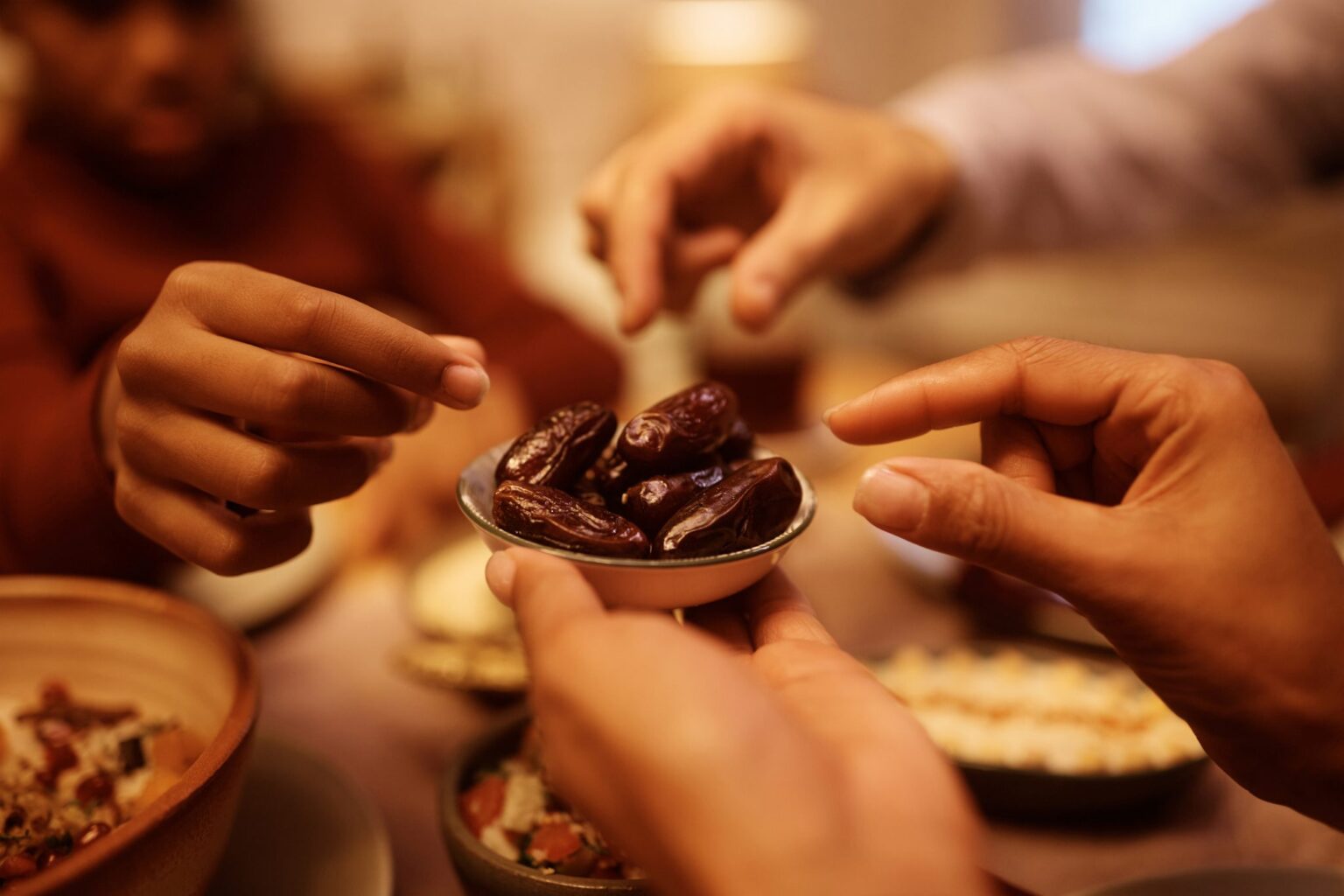It is Saturday, 23 March. It’s a cool, early spring night, still on wintertime. Barcelona’s Rambla del Raval is buzzing with people. Groups of tourists and locals photograph themselves next to Botero’s cat, while others crowd the terraces that line the promenade. hey seem indifferent to what is happening in the centre of the boulevard, where men and women (mostly of Pakistani origin) sit at around twenty tables. They listen to the speeches that take place on a small stage set up for the occasion. It is Ramadan, the ninth month of the Islamic calendar and one of the pillars of Muslim religious practice, and the people gathered on the Rambla del Raval break their fast collectively, in the public space.
This ritual, theiftar, is repeated at other times and in other places in the city throughout the month of Ramadan. Two days before, in this same space, a similar event is organised by the neighbourhood’s inter-religious group (GIR), linked to the Fundació Tot Raval. In the same week, it is in the large hall of the Maritime Museum, where the Fundación Ibn Battuta brings together more than 600 people in a similar event attended by consuls and the mayor. On the City Council’s website, you can find the events in other neighbourhoods of the city. In Trinitat Vella, Besòs, Clot and Sants, the Islamic communities take to the streets to break the fast with the neighbourhood by offering a small meal to all those who wish to participate.. These celebrations reflect different social and urban logics. They are proof that Barcelona society, like Catalan and Spanish society, has undergone a profound process of religious diversification. According to official figures, twenty-nine different confessions coexist in the city today. .
By a quirk of the calendar, Ramadan coincided this year with the Catholic Holy Week. If the traditional processions of this period are part of a long trajectory of social and religious hegemony, the iftars of the Muslim communities are part of a demand for visibility and civic recognition. In this sense, they contrast with the relative invisibility (and precariousness) of the city’s Islamic places of worship. With thirty-three oratories, Islam is the second largest religious minority in Barcelona, behind Evangelical Christianity (which has nearly two hundred churches). All these centres occupy spaces originally intended for other uses, converting former commercial premises into places for community and religious gatherings, which are often cramped at Friday prayers or on the occasion of major festivals.
The iftars thus become an opportunity to make Islam visible, and to concretise in a specific space and time the diversity of which the city boasts so much. This Saturday in March, on the Rambla del Raval, the speeches that precede the breaking of the fast insist on this idea Apart from various members of the Camí de la Pau, the community organising the event, a representative of the city council and a former municipal official in charge of intercultural issues also took the floor. Some speeches referred to the dramatic situation in Gaza, while others lamented the drought situation in Catalonia. All the speeches agree in welcoming the plurality of the city, the will to welcome and include. Diversity becomes not only a characteristic of the neighbourhood, but almost synonymous with it. As an example of pluralism and coexistence, the Raval is also presented as a spatial counterpoint to the discourses of the extreme right.
These celebrations are taking place in a particular political context, in a Europe, Spain and Catalonia marked by the rise of conservative populism. The extreme right, here and there, coincide in consigning Islam and Muslims to a perpetual condition of otherness. However, these discourses are not unique to this end of the political chessboard. They are anchored in a long history, in a particular relationship between the West and the so-called “Muslim world”. This is probably why (but not only) communities are quick to organise these iftars, with the aim of breaking down stereotypes and normalising the visibility of Islam in the public space. Governed by the sharing of food, iftars are reminiscent of any other popular event, whether it is a festive meal or a neighbourly dinner. Since they began to be held a few years ago, they have had the support of the authorities, in the form of the presence of some local authorities and the mandatory measures that govern (and control) any activity in the public space (council fences, cardboard bins, stage and sound system, etc.).
In the dynamics of global and cosmopolitan cities, embedded in the logics of urban neoliberalism, diversity sometimes seems to be a trademark. It is paradoxical that diversity is celebrated in a complex urban space, in neighbourhoods where current events are marked by almost daily evictions or by logics of exclusion and social segregation that affect certain groups and collectives in a heartbreaking way. In this context, the commemoration of iftars in public space is not an abstract appeal to showcase diversity. It is, above all, the vindication of the right to the city for all, where all the religious, cultural and community expressions that coexist in its social fabric have a place.



